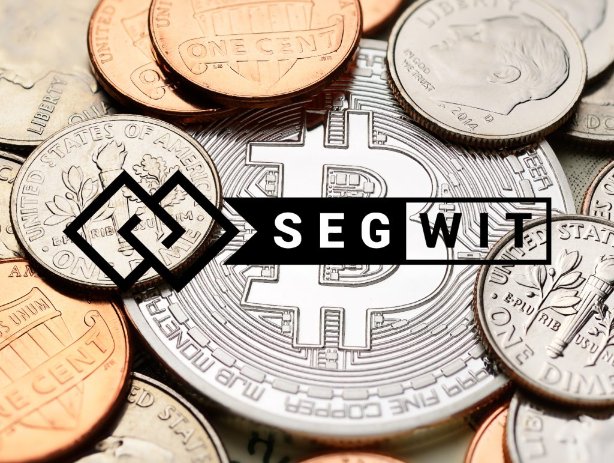
Table of Contents
Togglewhat is segwit
Segwit is the process by which the block size limit on a blockchain is increased by removing the signature data from Bitcoin transactions. Removing parts of the transactions frees up space which increases the ability to add more transactions to the chain.
If we analyze the word Segwit we can divide it into its 2 main factors which would be Seg = Segregate and Wit = Witnesses in the field of cryptocurrencies the witnesses are the signatures of the transaction and from this we can deduce that Segwit would be the separation of the signatures of the transaction.
The signature data called the witness would be separated from the record of who is sending or receiving the bitcoins. The witness data is moved to the end, and each byte of it would only count as one quarter of a “unit”.
It also addresses signature malleability, by serializing signatures separately from the rest of the transaction data, so that the transaction ID is no longer malleable.
Is segwit activated
In a short answer yes. Segwit is active in cryptocurrencies that can benefit the most from it, in the field of the Bitcoin cryptocurrency its Bitcoin Core application the code was ready since 2015 but due to some problems with the miners it was delayed until the summer of 2017 to be implemented.
bitcoin segwit activation
During 2016 and 2017, miners blocked Segwit for political reasons by exploiting a flaw in the trigger mechanism. The bitcoin rules are controlled by the economic majority not by the miners, which resulted in a soft fork where the economic majority would avoid the miners who blocked the Segwit.
This required a bit of time and coordination between economic matters, but in the end, they succeeded in activating the Segwit in Bitcoin on August 1, 2017.
segwit explained
Swgwit is the process by which the limit of the size of a block in a chain is increased, it is increased by removing the signature data of the Bitcoin transactions. When certain parts of a transaction are removed, this increases the capacity space to add even more transactions to the chain.
Segwit also corrected the malleability of transactions in addition to increasing Bitcoin’s ability to process transactions, segwit corrected a flaw in the Bitcoin protocol that allowed users to manipulate the identities of transactions
Before SegWit, the transaction ID of a transaction could have been changed by manipulating the transaction’s unlock code (its digital signature). After a transaction is digitally signed, it is sent through Bitcoin’s cryptographic hashing function, resulting in a unique transaction ID.
If a character is changed in the digital signature, it will result in a completely different transaction ID. SegWit moves the signature to the end of the transaction data, so the transaction ID is created from everything but the digital signature. Preventing malicious nodes from altering the transaction ID.
By far the largest cryptocurrency by market cap is Bitcoin, and for good reason. However, many in the crypto space have criticized Bitcoin because it is having trouble scaling to its ever-expanding user base.
Bitcoin is only capable of processing a mere 7-10 transactions per second on the base layer. Bitcoin’s underlying technology, although revolutionary, has also become one of Bitcoin’s most significant challenges.
Nevertheless, prominent developers in the Bitcoin community are working to develop a solution to the problem. SegWit and the Lightning Network together will allow Bitcoin to process millions (or more) transactions per second.
segwit fork
A soft fork was applied to prevent the malleability of unintentional bitcoin transactions, allow the transmission of optional data, and avoid certain restrictions.
but what is a soft fork
n terms of blockchain technology, a soft fork (or sometimes soft fork) is a change to the software protocol where only previously valid blocks / transactions are made invalid.
Since old nodes will recognize the new blocks as valid, a soft fork is backward-compatible.
This was applied because the miners did not want to use segwit for political reasons, but in the end most of the investor users won and applied a soft fork
Litecoin segwit adoption
After the launch of segwit in bitcoin, the next to activate it was Litecoin, even though this was already implemented in its bitcoin code, it activated it first, when Litecoin activated the segwit the value of the (LTC) increased in a short time.
The use of segwit in Litecoin has increased in recent years. What results in a significant decrease in the cost of network transactions, and although there are still those who do not use segwit sooner or later they will have to adapt or stay in the past risking that their income decreases.
cryptocurrency segwit
segwit is a soft fork applied to improve the capacity of the transactions of a blockchain by erasing the signature data of the transactions and increasing the block size limit. the cryptocurrencies that applied this mainly decreased the cost of transactions and time, which increases their value







